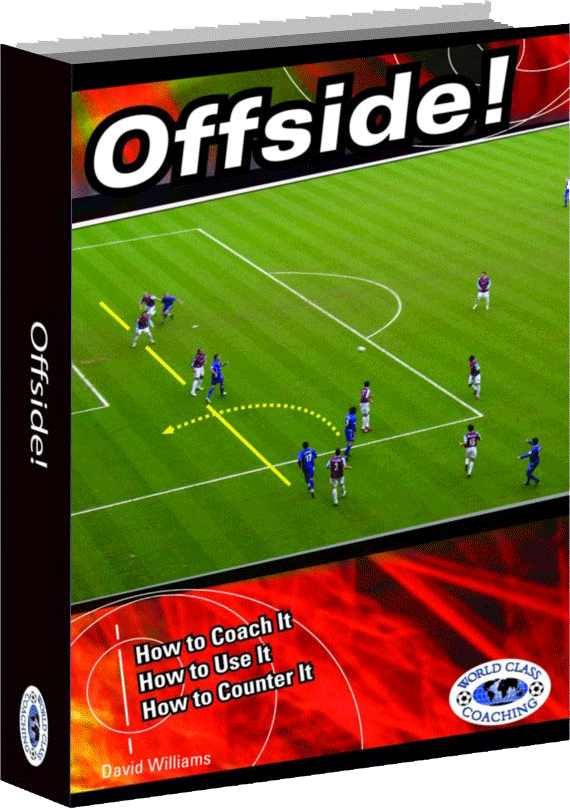In a post last December I talked about how I was working with my team to understand the different ways to beat the offside trap. Some of the ideas and exercises I use are from the book, 'Offside!'.
A reader suggested that runs from the midfield was another way to effectively defeat the trap. Here's what David Williams says about these types of runs in, 'Offside!':
"Tell the loan striker to restrict his runs forward but encourage more runs from midfield. The extra player in that area allows at least one and often two players to run forward from deeper positions every time there is an opportunity to play passes behind your opponents back line. Runs from deep will always cause the defending team problems where offside is concerned. It is more difficult for the last defender to catch someone breaking from midfield, than it is a striker, already high up the field, trying to get behind the defense."
In addition to dealing with offside during the run of play you should also work with your team to deal with it on set pieces. Here's Williams' approach dealing with offside traps at free kicks:
"Without prior information on your opponents, it will be very difficult to anticipate whether they will try to catch your team out at set pieces. There may be a clue in their style of play-- holding a high line, always appealing to the officials for offside decisions, but you won’t really find out for sure until the first free kick or corner. However, it might be an idea for you to plan for the trap to be played and organize your own set pieces accordingly. In this way your players won’t be caught out and you might discover if the intention is there in the future.
So what are the options for beating offside at a set piece?
As before lets deal with free kicks first, and have in mind some of the ideas discussed when trying to catch teams when defending.
Free kicks awarded on the angle, where the delivery will most likely be close to the goal, is shown in the diagram above. There are two possibilities here. One idea would be for the taker to feint to strike the ball but actually step over it. The defenders, if intending to move forward, will be fooled into doing so. When the taker resumes his position there will be uncertainty among the defenders and they will be less likely to try it a second time. If they do then you might just reap the reward. Remember it only needs one player to misunderstand and any number of attackers could be in on goal."
As I said in my original post back in December, I don't think as coaches we should spend a lot of time teaching tactics like the offside trap unless their is a transfer of training that will impact other areas of their play. But a little time spent in practice can lead to a greater understanding and a larger arsenal of weapons on game day.
Have a Great Day!
Tom



